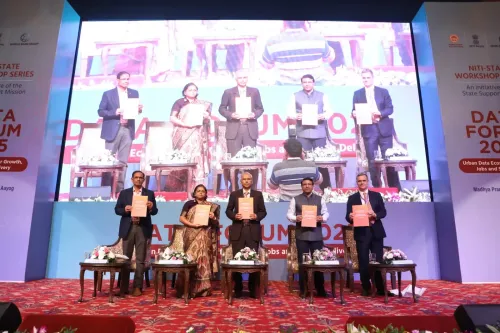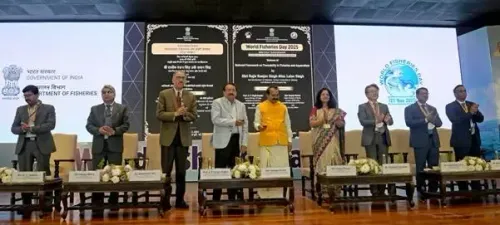Women’s Involvement in India’s Semiconductor Industry Expected to Hit 35% by 2030
Synopsis
Key Takeaways
- Women in semiconductor sector projected to reach 35% by 2030.
- Current representation stands at 25% with expectations to surpass 30% by 2027.
- Inclusion initiatives like upskilling and pay parity are essential.
- Industry growth expected to generate 1 million new jobs by 2026.
- Collaboration between sectors is key to creating supportive environments.
New Delhi, March 7 (NationPress) Women’s participation in India’s semiconductor industry is anticipated to grow from 25% in 2025 to 35% by 2030, according to a recent report.
Currently, women make up a quarter of India's 220,000 professionals in chip design and engineering, but this number is forecasted to exceed 30% by 2027, as per the findings from NLB Services, a prominent global technology and digital talent solutions provider.
The gender disparity in India’s semiconductor sector can be addressed through upskilling initiatives, salary equality, and inclusive employee benefits such as maternity leave, support for career breaks, flexible work arrangements, and project-based roles.
As India’s semiconductor sector rapidly expands, projected to reach $79.20 billion by FY31, the global market is set to evolve into a trillion-dollar industry by the decade's end.
This growth offers extraordinary opportunities for talent, with the Indian semiconductor field expected to create 1 million jobs by 2026.
However, achieving this scale requires a more inclusive workforce, as the industry cannot succeed as a male-dominated environment. The report emphasizes that women’s involvement is crucial for driving growth and innovation.
“There is a necessity for both mindset and infrastructural changes to boost women’s participation. This means prioritizing gender-neutral policies and equal opportunities. Furthermore, infrastructural improvements like worker housing, healthcare facilities, and effective transport will be vital for attracting and retaining skilled individuals,” stated Sachin Alug, CEO of NLB Services.
“Collaboration between the government and the private sector will be essential in creating safe, sustainable, and worker-friendly conditions. As India advances its electronics manufacturing goals, incorporating women into the design and manufacturing landscape will be critical,” he added.
In the chip semiconductor fabrication sector, the male-to-female ratio is 60:40; chip design stands at 70:30, and ATMP (assembly, testing, marking, and packaging) at 80:20, among others.
Bridging this gap is vital for establishing a diverse and sustainable semiconductor ecosystem in India, the report concluded.
With appropriate initiatives, India can effectively close the gender gap and significantly enhance women’s representation in the semiconductor industry, it noted.









